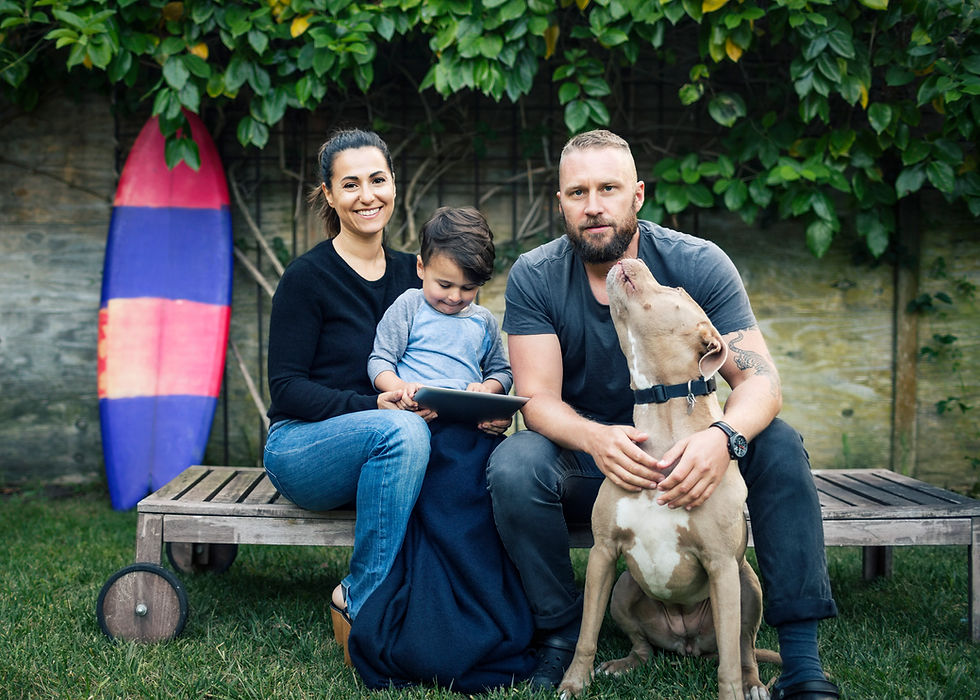How To Choose the Right Dog When You Live in an Apartment
- Diamond's Friends Pet Rescue

- Jun 15
- 4 min read

If you want a dog and live in an apartment, you are in luck! Provided your landlord signs off on it, there’s no reason why you can’t adopt a dog.
However, you need to be thoughtful about the kind of pup you bring home. Not all dogs are cut out for apartment life.
Here are the key things to consider before bringing home a dog if you live in an apartment.
Landlord Restrictions
The most critical thing you need to do before getting a dog is to check your lease to make sure your rental is pet-friendly. If it’s not, try talking with your landlord about putting down a pet deposit or paying monthly pet rent and see if they will change their policy.
If your rental is pet-friendly, be aware of restrictions. Some apartments have rules about breed types, weight limits, or even the number of pets allowed.
Certain breeds, like Pit Bulls, German Shepherds, or Dobermans, are often unfairly restricted due to outdated breed-specific policies. It's also common to see a 50-pound weight cap in many apartment complexes.
Knowing these restrictions before you start searching for a dog can make sure you fall in love with a dog that your landlord won’t make you get rid of.
Pro tip: Get written permission to have a pet if possible, and be upfront with your landlord or property manager. Doing this will ensure your pet is a welcome resident, not a surprise guest.
Personality & Temperament
This is likely the second most important factor to consider. A dog’s personality can make or break your apartment experience.
Look for dogs who are:
Calm (or able to be calm after adequate exercise)
Quiet
Friendly with neighbors, strangers, and other dogs
Not reactive to every sound
Dogs prone to separation anxiety, reactivity, or territorial barking might struggle in a busy apartment building, especially if you’re away for work during the day.
Energy Level
Apartments are known for not having a ton of space or yards, so a high-energy dog that is bouncing off the walls may struggle in an apartment.
Consider a dog that doesn’t require constant running space or intense daily exercise. Keep in mind that this doesn’t mean they won’t need walks or playtime. It just means they can be content with indoor activities and neighborhood strolls.
That said, if you work from home and plan on getting your dog out for lots of exercise, a higher-energy pup might do ok in your apartment. Just make sure you are fully committed to getting them the exercise they need.
While some rescues won’t adopt higher-energy dogs to folks in apartments, others do. So, if you want an energetic dog, live in an apartment, and live an active lifestyle that an energetic dog would thrive in, find a rescue that is willing to work with you.
At Diamond’s Friends Pet Rescue, as long as a dog isn’t reactive to other dogs or noises, we’d rather have a high-energy dog in an apartment than a home with a yard as long as the adopter is committed to getting the dog out for enough exercise each day.
Why is this? We want our dogs to see the world and have their lives be as big as possible as opposed to just being confined to a backyard for exercise.
Size
Yes, size matters, especially if your landlord imposes weight limits. But it might not matter as much as you think.
A Great Dane or Greyhound may sound like a crazy apartment dog choice, but their calm demeanor can make them great small-space companions. On the flip side, a high-strung small dog like a Jack Russell Terrier might constantly bounce off your walls and drive you bonkers.
Nevertheless, if you’re working with tight corners, narrow hallways, or you don’t have space for a large dog crate, a smaller dog may be a better choice for you. Plus, if you have to deal with stairs, a smaller dog would be easier to carry in the event of an emergency.
Learn More: Does Size Matter When Adopting a Dog?
Age
While puppies are undeniably adorable, they can also be chaos. They chew, need potty training, and require constant supervision. None of these pair easily with apartment living unless you have the time and patience (and you are ready to forfeit your security deposit).
Adult or senior dogs may be less chaos, potentially making them a better option for apartment living.
Additionally, if you adopt a dog from a rescue, you'll have a better understanding of their personality, temperament, energy levels, and size since these factors are more established in adult and senior dogs than in puppies. This maximizes the odds of you finding the right fit for your apartment.
Learn More: Choosing the Right Age When Adopting a Dog
Final Thoughts
The best apartment dog isn't always the smallest pup. It's the one whose personality and temperament fit your space. Whether that's a chill senior or a mixed-breed adult pup that you will take on lots of runs, the right dog is out there.
Take your time, ask lots of questions, and think outside the box before choosing a new dog.



Comments